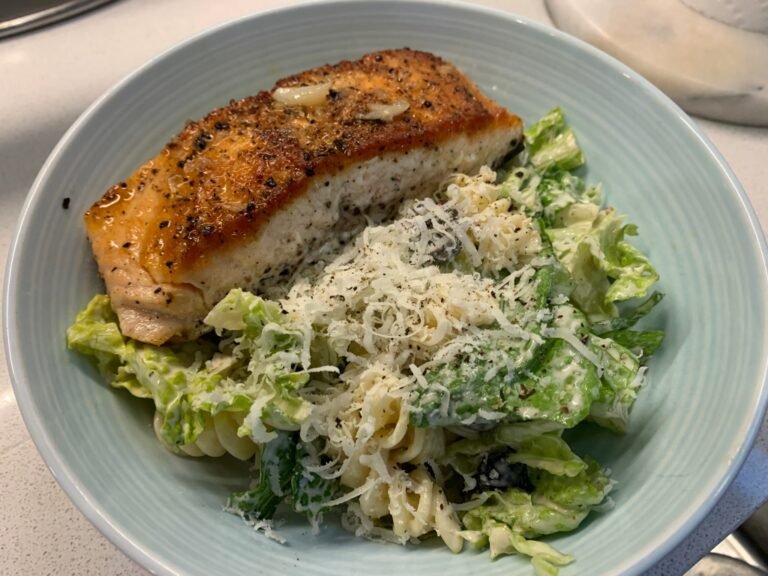Do you ever feel like you’re doing everything right but still not losing weight? It might be that your meals are missing something crucial: enough protein. Protein plays a key role in weight loss by keeping you full, helping build lean muscle, and supporting healthy metabolism. However, many people don’t eat enough protein without even realizing it. You may think of protein as just meat and eggs, but it can actually come from many different foods—some of them surprising.
In this blog, we will share practical and sneaky ways to increase protein in your diet so you can reach your weight loss goals.
1. Start Your Day with Protein-Packed Breakfasts
It’s easy to reach for a bowl of cereal or a slice of toast in the morning, but these options often lack protein. A better way to fuel your day is with breakfasts rich in protein. Try scrambled eggs, Greek yogurt with fruit, or a protein smoothie with nut butter. These meals not only satisfy your hunger but also prevent cravings later.
If you usually skip breakfast, even something small like cottage cheese or a handful of almonds can jump-start your day. Eating protein early helps set the tone for the rest of your meals and keeps your energy steady throughout the morning.
2. Choose Lean Proteins for Lunch and Dinner
Swapping out less nutritious options for lean proteins is an easy way to upgrade your meals. Chicken, turkey, fish, and tofu are all excellent sources of lean protein. Try a grilled chicken recipe as part of your lunch or dinner for a simple way to pack in protein. You don’t have to be a master chef to enjoy these meals, as they are quick to make and easy to pair with vegetables or a salad.
Adding protein-rich ingredients to meals also makes portion control easier. You’ll feel fuller sooner and won’t be tempted to overeat. This small change can make a big difference in your weight loss journey.
3. Snack Smart with High-Protein Options
Snacking doesn’t have to mean reaching for chips or sweets. There are many high-protein snacks that can keep you full between meals. Try hard-boiled eggs, string cheese, or a handful of mixed nuts. Hummus with sliced vegetables is another satisfying option that sneaks in both protein and fiber.
A great way to avoid unhealthy snacking is by preparing your protein snacks in advance. Keeping yogurt, cottage cheese, or protein bars on hand can help you avoid impulse buys when hunger strikes.
4. Use Protein Powders and Supplements Wisely
Protein powders are a quick and easy way to boost your protein intake, especially when you’re on the go. Adding a scoop of protein powder to your morning smoothie or mixing it with milk can give you a satisfying drink. You can also stir protein powder into oatmeal or pancake batter for a protein boost.
However, not all protein powders are the same. Look for options with minimal added sugars and artificial ingredients. Protein supplements can be helpful, but they should complement a balanced diet rather than replace whole foods.
5. Incorporate Plant-Based Proteins
If you’re not a fan of meat or want to reduce your intake, there are plenty of plant-based protein options. Lentils, beans, quinoa, and chickpeas are great sources of protein that fit easily into many meals. You can also try plant-based protein powders made from peas or rice.
Adding beans to soups, salads, or casseroles is a sneaky way to increase protein without making major changes. Even swapping out pasta for lentil or chickpea pasta can make a noticeable difference.
6. Sneak Protein into Smoothies and Drinks
Smoothies are an excellent way to pack in protein without feeling like you’re eating a heavy meal. Add Greek yogurt, cottage cheese, or nut butter for extra protein. Milk or a milk alternative like soy milk will also increase the protein content.
You can also try mixing in chia seeds or hemp seeds, which provide both protein and healthy fats. These tiny additions blend well and won’t alter the taste of your smoothie. This trick makes it easy to sneak more protein into your diet, even on busy days.
7. Add Protein to Soups and Salads
Soup and salad may seem light, but they can become filling meals with the right ingredients. Add grilled chicken, boiled eggs, beans, or tofu to salads for an easy protein boost. You can also use Greek yogurt instead of heavy cream to make soups richer while adding protein.
Even adding a small handful of nuts or seeds to your salad provides extra protein and crunch. These small additions turn a light dish into a satisfying meal.
8. Make Protein Swaps for Everyday Foods
Look for ways to swap lower-protein foods with higher-protein alternatives. Use Greek yogurt instead of regular yogurt, or try quinoa instead of rice. Choose whole-grain bread with added seeds, or opt for protein-enriched pasta.
These swaps are easy to make and often taste just as good—or better—than the original versions. They add protein to meals without feeling like you’re making a big change.
9. Combine Proteins for Maximum Impact
Eating a combination of protein sources can keep you fuller for longer. For example, mixing eggs and avocado or pairing chicken with beans gives you a variety of proteins and nutrients. Combining plant and animal proteins can also help you hit your daily protein goals.
Balancing your meals with different proteins not only keeps your diet interesting but also ensures you get a range of essential amino acids. This strategy makes it easier to stick to your weight loss plan.
10. End the Day with a Protein-Rich Snack
Evening snacks can sabotage weight loss if they’re loaded with sugar or empty calories. Instead, opt for a protein-rich snack like cottage cheese, a boiled egg, or a small bowl of Greek yogurt. These snacks help control late-night hunger and prevent overeating the next day.
A little planning goes a long way in keeping your diet on track. Having healthy, protein-rich snacks available can help you avoid less nutritious options when cravings hit.
In conclusion, adding more protein to your diet doesn’t have to feel like a chore. With small changes like switching to high-protein snacks, swapping everyday foods, and mixing in plant-based options, you can easily meet your protein goals. These sneaky tricks fit into any lifestyle, making it easier to lose weight without feeling restricted.
Brit is a passionate writer with a love for storytelling and exploring the depth of human experience through words. With a keen eye for detail and a thoughtful voice, Brit crafts pieces that resonate with readers and spark meaningful reflection. When not writing, Brit enjoys quiet moments with a good book, long walks, and finding inspiration in everyday life.






